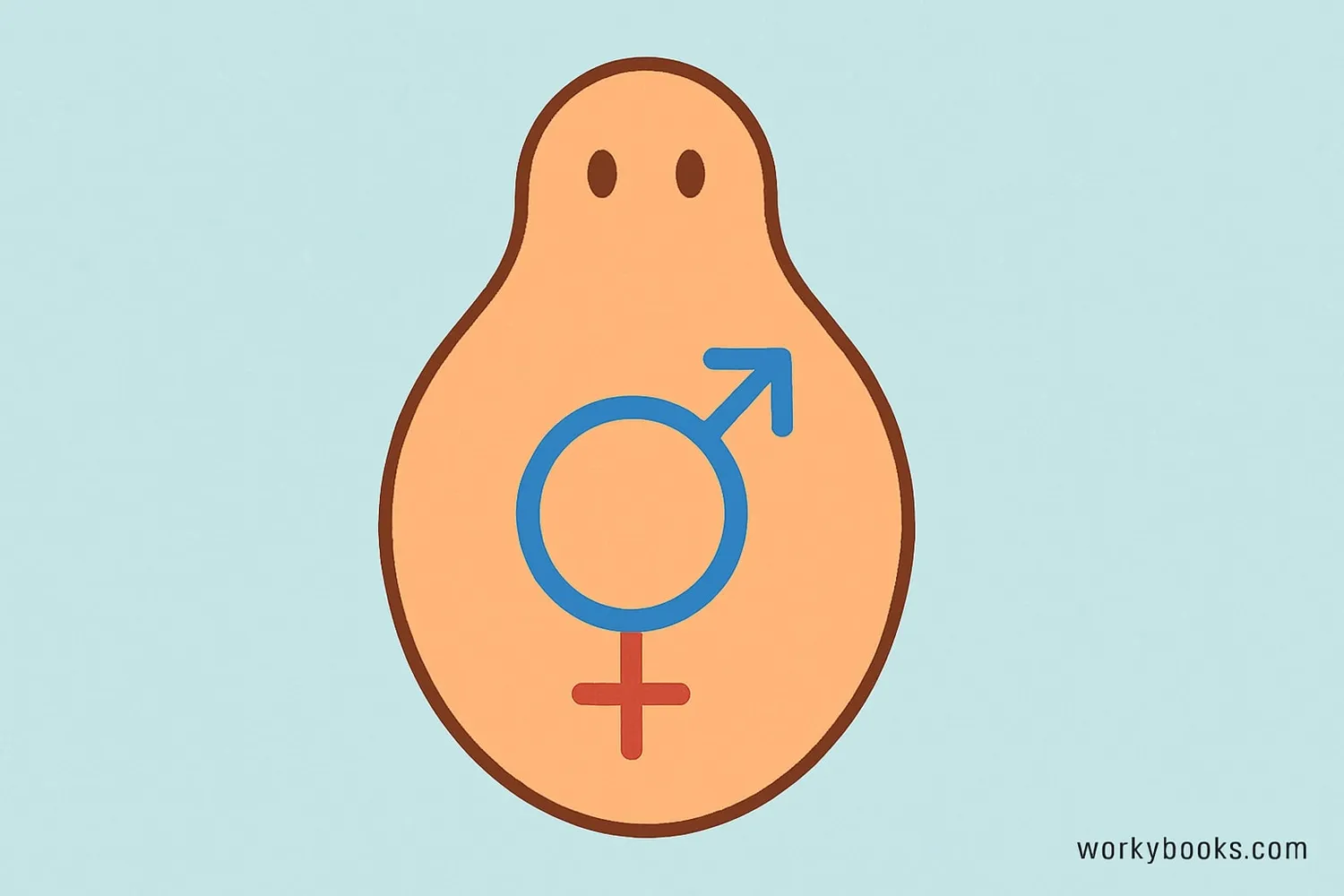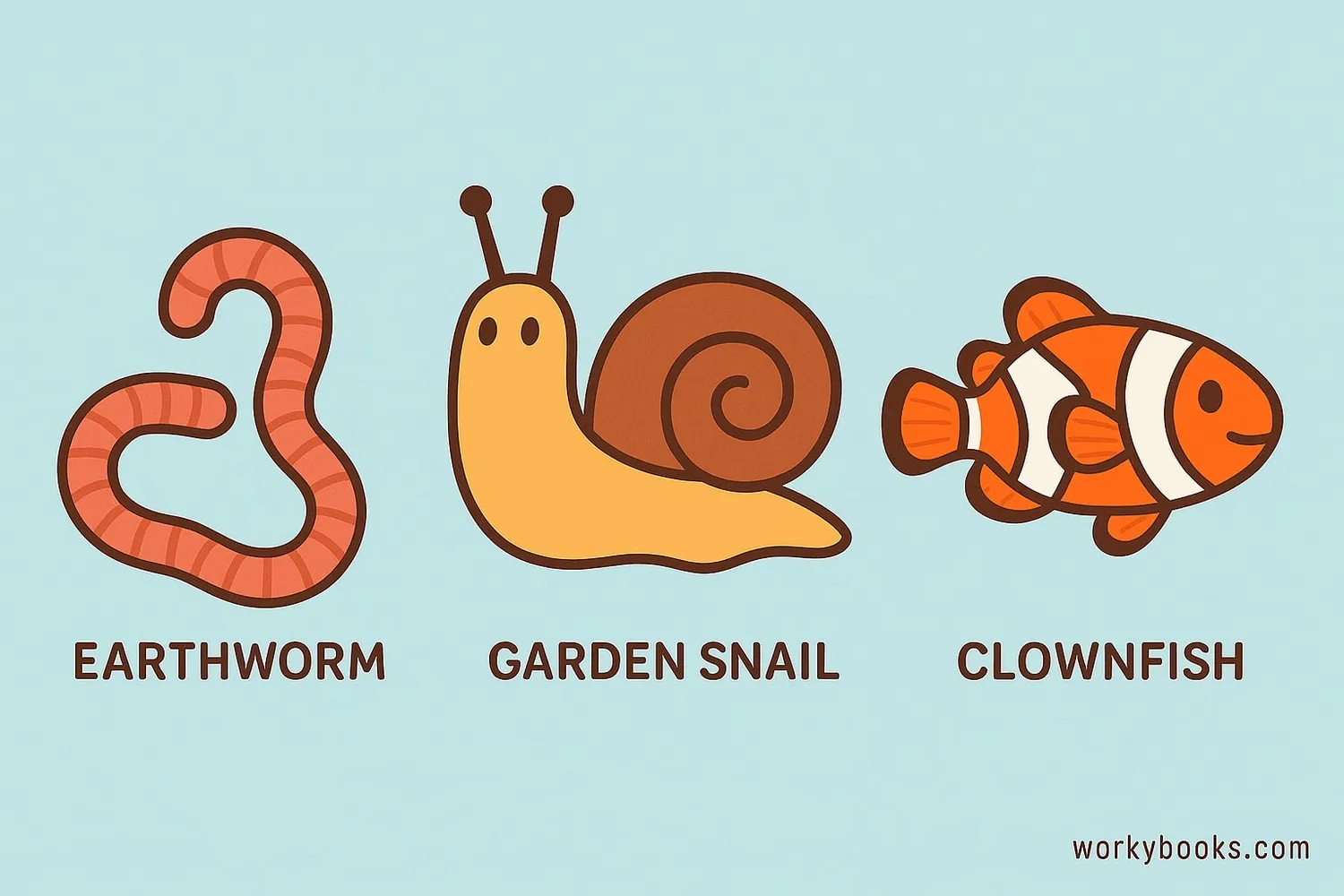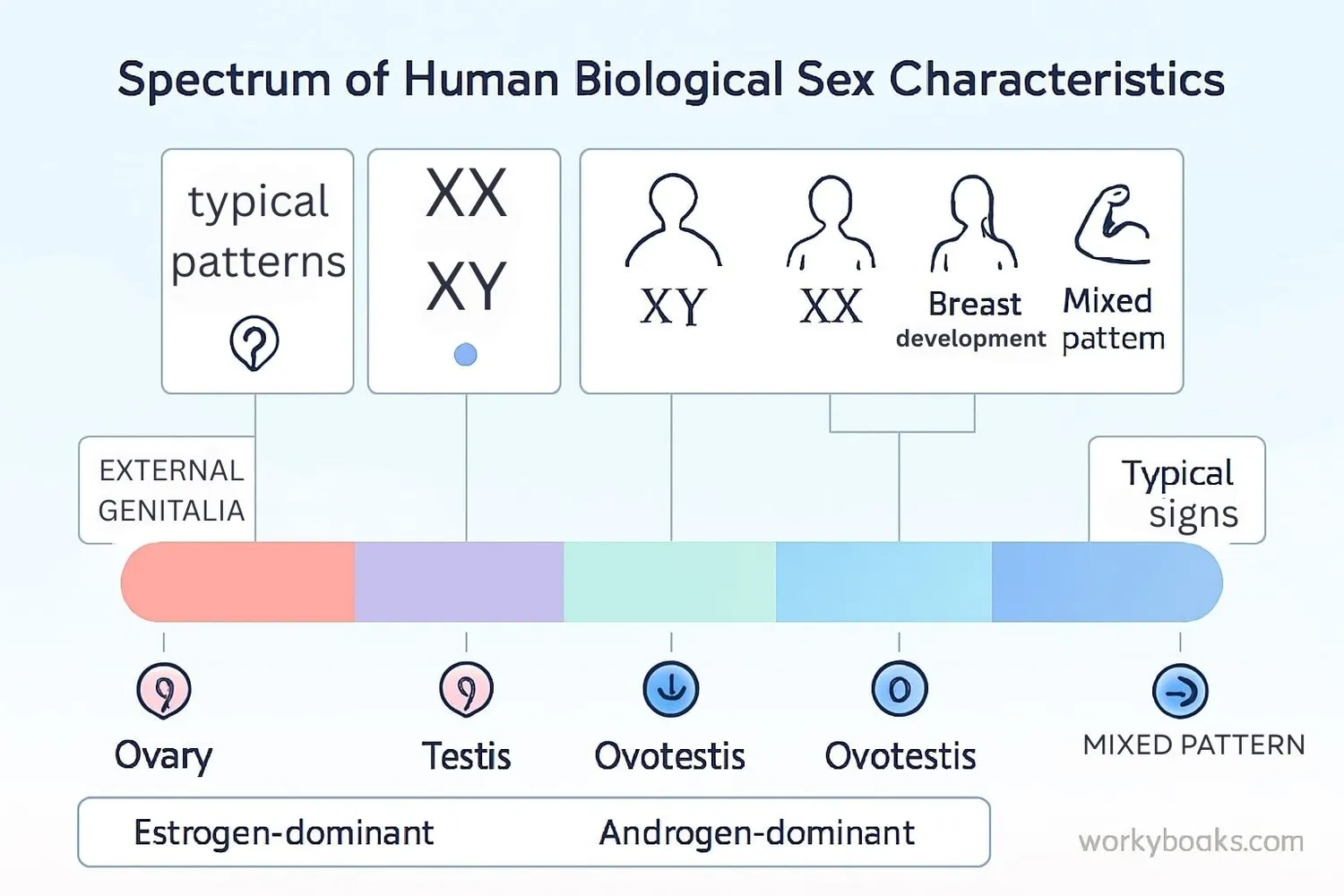Hermaphroditism - Definition, Examples, Quiz, FAQ, Trivia
Learn about organisms that have both male and female reproductive characteristics
What is Hermaphroditism?

Hermaphroditism is a biological condition where an organism has both male and female reproductive organs. The word comes from Greek mythology - Hermaphroditus was the child of Hermes and Aphrodite who became joined with a nymph, forming one body with both male and female qualities.
In science, we use the term to describe organisms that can produce both eggs and sperm. This doesn't mean they can always reproduce by themselves (though some can), but they have the biological equipment of both sexes.
Science Fact!
About 65,000 different animal species are hermaphrodites, including many you might see in gardens or aquariums!
Hermaphrodite Animals

Many animals in nature are hermaphrodites. Some common examples include:
Earthworms
Each earthworm has both male and female parts and exchanges sperm with other worms
Snails & Slugs
Most land snails and slugs are hermaphrodites with complete reproductive systems
Clownfish
These fish can change from male to female when needed in their social groups
Parrotfish
Many change sex from female to male as they grow older
There are two main types of animal hermaphroditism:
Simultaneous hermaphrodites have both male and female reproductive systems at the same time. Earthworms and snails are examples.
Sequential hermaphrodites are born one sex and change to the other sex later in life. Clownfish are born male and can become female, while parrotfish start as females and can become males.
Hermaphroditism in Humans

In humans, the term "hermaphroditism" is now more respectfully called intersex conditions. These are natural variations where a person is born with reproductive or sexual anatomy that doesn't seem to fit the typical definitions of female or male.
Intersex traits might include:
Chromosomal Variations
Having different chromosome patterns than typical XX (female) or XY (male)
Hormonal Differences
Producing different levels or responses to sex hormones
Anatomical Variations
Having genitalia or internal reproductive organs with traits of both sexes
It's important to understand that intersex variations are natural biological events that occur in about 1 in 1,500 to 2,000 births. People with intersex traits are perfectly healthy in most cases, and these variations are just part of the natural diversity of human biology.
Respectful Language
While "hermaphrodite" is still used in biology for plants and animals, when referring to humans, the preferred term is "intersex" as it's more accurate and respectful.
Hermaphroditism Knowledge Quiz
Test your understanding of hermaphroditism with this quiz. Answer all 5 questions to see how much you've learned.
Frequently Asked Questions
Here are answers to some common questions about hermaphroditism:
Interesting Hermaphroditism Facts
Discover some fascinating facts about hermaphroditism in nature:
Reciprocal Mating
Some simultaneous hermaphrodites like earthworms practice reciprocal mating - both worms exchange sperm with each other, and both can later lay fertilized eggs!
Social Sex Changes
In clownfish groups, if the female dies, the largest male will change sex to become the new female! This ensures the group can continue to reproduce.
Plant Strategy
Some plants can change their sex expression based on environmental conditions! For example, Jack-in-the-Pulpit plants can change from male to female as they grow larger and store more energy.
Historical Understanding
Ancient naturalists like Aristotle documented hermaphroditic animals, but they didn't understand how it worked. Modern science began properly studying these phenomena in the 18th century.


